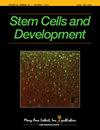小鼠肾脏发育过程中肾干细胞标记的BrdU方法。
IF 2.5
3区 医学
Q3 CELL & TISSUE ENGINEERING
引用次数: 0
摘要
在小鼠肾脏发育的全过程中,采用溴脱氧尿苷(BrdU)连续标记方法,探索BrdU标记的最佳时间、BrdU保留细胞的分布,并探索干细胞在成年肾脏中的生态位。从胚胎期第11.5天(E11.5)到出生后第21.5天(P21.5),每天向小鼠腹膜内注射一次BrdU,连续3天。在最后一次注射BrdU后24小时和6个月大时收获肾脏。采用BrdU处理的成年小鼠肾大部切除(Nx)肾损伤模型,观察BrdU保留细胞对肾损伤的反应。当BrdU标记在E11.5-13.5时,BrdU保留细胞主要在成年小鼠的乳头和髓质内部检测到。当BrdU标记在P0.5-11.5时,BrdU保留细胞主要分布在髓质内侧和外侧。当BrdU标记在P12.5-17.5时,BrdU保留细胞主要在髓质外。当BrdU标记在P18.5-21.5时,除了皮层外,几乎没有发现BrdU阳性细胞。在成年小鼠Nx手术72小时后,通过P0.5-2.5或P15.5-17.5处的BrdU标记,在许多皮质近端小管中发现BrdU保留细胞显著增加,而在切口边缘附近的髓质中发现显著减少。此外,大多数BrdU阳性细胞未与增殖细胞核抗原(PCNA)共染色。如果在肾脏发育的不同时期给予BrdU,则标记保留细胞在小鼠肾脏中的分布是不同的。大多数BrdU保留细胞是静止的,近端小管是唯一始终含有BrdU阳性细胞的节段,这可能在成人肾脏中具有干细胞的小生境。本文章由计算机程序翻译,如有差异,请以英文原文为准。
BrdU Methodology for Labeling Renal Stem Cells during Kidney Development of Mice.
A continuous Bromodeoxyuridine (BrdU) labeling approach was used during the whole process of the mice kidney development to explore the best BrdU-labeling time, the distribution of BrdU-retaining cells, and to probe into the niche of stem cells in adult kidney. BrdU were injected intraperitoneally to the mice once daily for 3 consecutive days from day 11.5 of embryonic period (E11.5) until the postnatal day 21.5 (P21.5). The kidneys were harvested 24 hours after the last BrdU injection and 6 months of age. A renal injury model of subtotal nephrectomy (Nx) in adult mice treated with BrdU was used to observe the response of BrdU-retaining cells to renal injury. When BrdU labeled at E11.5-13.5, the BrdU-retaining cells were mainly detected in the papilla and inner medulla in adult mice. When BrdU labeled at P0.5-11.5, the BrdU-retaining cells were mainly detected in the inner medulla and outer medulla. When BrdU labeled at P12.5-17.5, the BrdU-retaining cells were mainly detected in the outer medulla. When BrdU labeled at P18.5-21.5, almost no BrdU-positive cells could be found, except the cortex. 72 hours after Nx operation in adult mice by BrdU-labeling at P0.5-2.5 or P15.5-17.5, a significant increase of BrdU-retaining cells was found in many cortical proximal tubules, while a dramatic decrease was detected in medulla near the incision edge. Moreover, most of BrdU-positive cells were not co-stained with proliferating cell nuclear antigen (PCNA). The distributions of label-retaining cells in the mice kidney were different if BrdU was administered in different periods of kidney development. Most of BrdU-retaining cells were quiescent, the proximal tubules were the only segments that always contained BrdU positive cells, which may have the niche of stem cells in adult kidney.
求助全文
通过发布文献求助,成功后即可免费获取论文全文。
去求助
来源期刊

Stem cells and development
医学-细胞与组织工程
CiteScore
7.80
自引率
2.50%
发文量
69
审稿时长
3 months
期刊介绍:
Stem Cells and Development is globally recognized as the trusted source for critical, even controversial coverage of emerging hypotheses and novel findings. With a focus on stem cells of all tissue types and their potential therapeutic applications, the Journal provides clinical, basic, and translational scientists with cutting-edge research and findings.
Stem Cells and Development coverage includes:
Embryogenesis and adult counterparts of this process
Physical processes linking stem cells, primary cell function, and structural development
Hypotheses exploring the relationship between genotype and phenotype
Development of vasculature, CNS, and other germ layer development and defects
Pluripotentiality of embryonic and somatic stem cells
The role of genetic and epigenetic factors in development
 求助内容:
求助内容: 应助结果提醒方式:
应助结果提醒方式:


